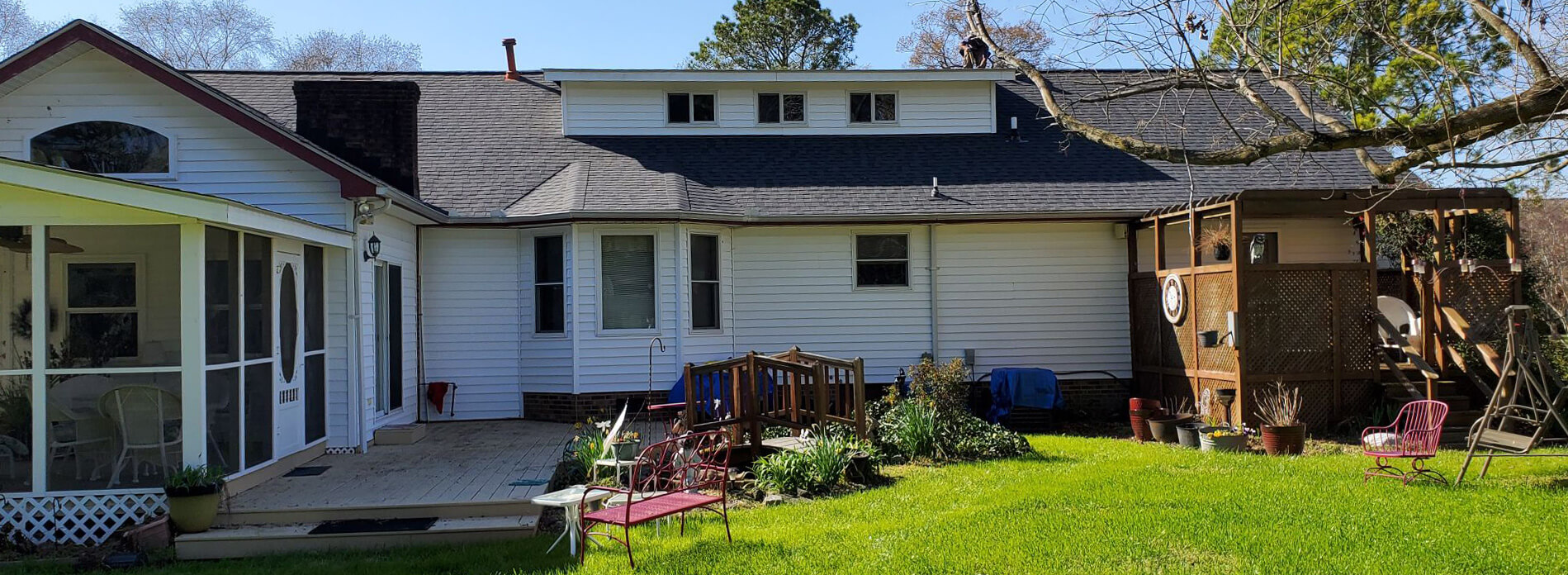If you’ve been in the market for a new roof for your home, you have probably run across the option of roofing over top of your existing roof.
“Roofing over” is a method that leaves the current shingles and roof deck in place, and installs new shingles right over top of the existing ones. Alternatively, reroofing requires removing all existing shingles, doing any necessary repairs or replacement of the roof deck, membrane, and supporting structures beneath, before replacing the shingles with new ones.
Roofing over your roof requires that all the existing shingles are perfectly flat without any curling, that your roof deck be in perfect condition, that there are no leaks or ventilation issues that need addressing, and that the current roofing structure is able to withstand the additional weight of a second layer of shingles. However, if all of these things are true, you may not need a new roof at all. And even if those conditions are in place, a roof over existing roof can appear wavy and uneven. In most cases, a roof over does not make long term sense for homeowners, which is why we do not recommend this to our clients and do not guarantee this type of work.
We should note here that it is possible to roof over certain materials, like membranes that are in decent condition. This is done more often on commercial roofs depending on the core sample, decking, condition of insulation, etc. This type of project is only performed after careful inspection of the flat roof and an analysis and assessment of the materials and decking beneath the membrane.
Roofing over an existing roof is sold to homeowners as a cheaper alternative to replacing their roof. Often times, though, roofing over does not really solve the underlying issues the structure may have and can end up being a more costly option. If you’re looking into replacing your roof, it’s likely because you’ve noticed leaks here and there, there’s damage to the shingles, shingles are missing or deteriorated or you’re noticing your energy bill is soaring. Putting new shingles overtop of existing ones doesn’t address any of these critical issues on the inside, which means damage may continue to occur. Putting another layer of shingles on top of existing ones that have issues also means it will take more time, money and material to get to and diagnose the problem, and more labor to repair the underlying issues.
Replacing your roof may cost more up front, but the return on investment is higher.
Over the long term, a new roof will look better, last longer, and protect your home better. When you allow a licensed roofing contractor to remove the existing shingles, they can properly assess any other repairs that need to be done to the roof decking, membrane, flashing, structural beams or ventilation systems. Having these issues addressed at that point means the overall lifespan of the roof will be longer. It’s also important to note that some roofing material manufacturers will not warranty a product that is put over existing shingles rather than onto a clean roof deck. While roofing over a roof may be cheaper upfront, the costs of uncovered warranty claims and an overall shorter lifespan don’t pan out in the long run.
Your roof is a major part of your home that you want to look good and function well. When you’re considering your roofing project, consider that your roof literally protects everything in your home beneath it. It’s not the place to cut corners. Before reroofing your home, research roofing contractors in your area, read up on their online reviews and ask around your neighborhood for recommendations. Get quotes from at least two to three reputable companies and research the materials they work with to ensure they are high quality and guaranteed with a manufacturer warranty.
If you live in the Hampton Roads region and your home needs a new roof, contact Andrews Roofing. We’d love to be one of the companies to provide you with an estimate. Our work is always guaranteed, we use some of the best products on the market, and we’ve been providing excellent customer service to Tidewater residents for years.
